| DCC2242 |
GFB-12811
Featured
|
GFB-12811 is a high selective and orally active CDK5 inhibitor with an IC50 of 2.3 nM. GFB-12811 is highly selective over the other tested kinases (CDK1/2/6/7/9). |
.gif)
|
| DCC2251 |
Gilteritinib Fumarate
Featured
|
Gilteritinib (ASP2215) hemifumarate is a potent and ATP-competitive FLT3/AXL inhibitor with IC50 of 0.29 nM/0.73 nM, respectively. |
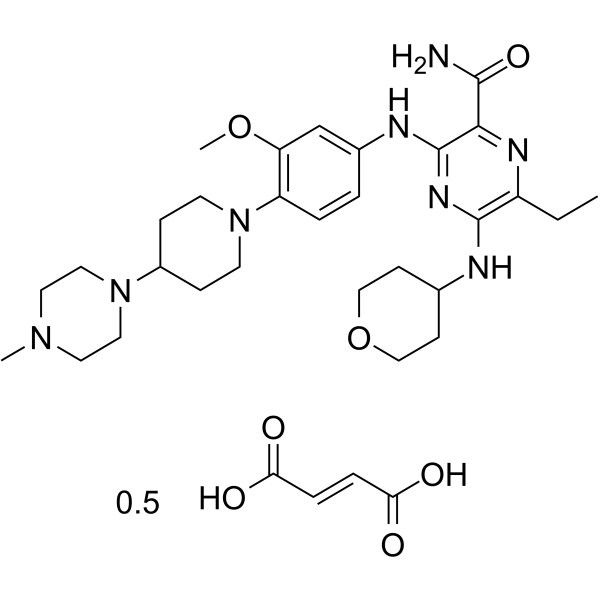
|
| DCC2356 |
Gsk1733953a
Featured
|
Novel Inhibitor of the Mycobacterium tuberculosis Demethylmenaquinone Methyltransferase MenG |

|
| DCC2390 |
Gsk3-in-38
Featured
|
GSK3-IN-3 is a mitophagy inducer, inducing Parkin-dependent mitophagy. GSK3-IN-3 is also a GSK-3 inhibitor with an IC50 value of 3.01 μM. GSK3-IN-3 is non-ATP nor substrate competitive and is neuroprotective against 6-OHDA. |
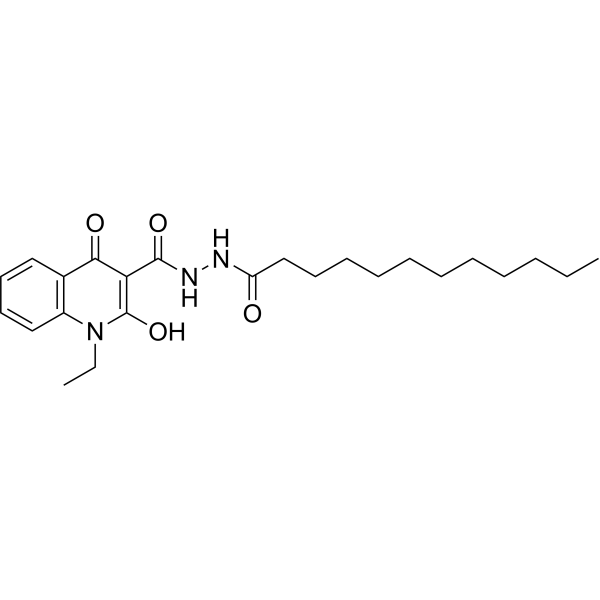
|
| DCC2512 |
Hdl376
Featured
|
HDL376 is a scavenger receptor class B type I (SR-BI) inhibitor. HDL376 directly inhibits SR-BI-mediated lipid transport in cells and in liposomes reconstituted with purified SR-BI (IC50 = 0.22 μM). HDL376 can be used for the research of atherosclerotic coronary artery disease. |

|
| DCC2842 |
JNJ-40355003
Featured
|
JNJ-40355003 is a potent and selective atty acid amide hydrolase (FAAH) inhibitor. |
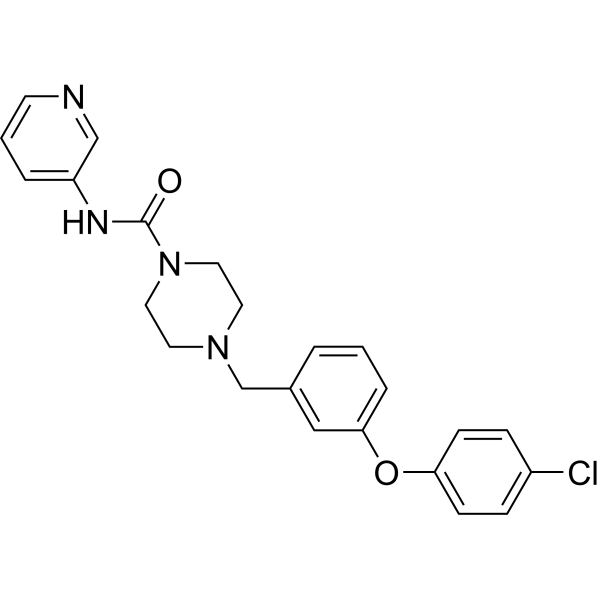
|
| DCC3008 |
L-778123
Featured
|
L-778123 is a dual FPTase and GGPTase-I inhibitor, with IC50s of 2 nM and 98 nM respectively. |
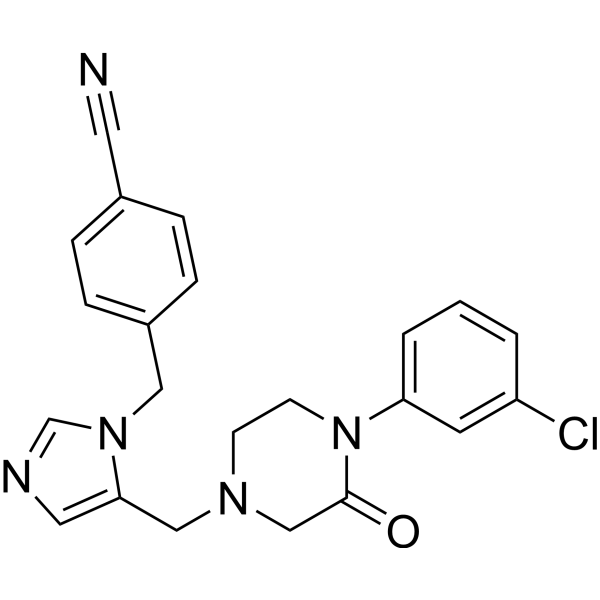
|
| DCC3108 |
Lk-514
Featured
|
Novel selective agonist of the human melanocortin 1 receptor (hMC1R) for sunless tanning and prevention of genotoxicity of UV in melanocytes |

|
| DCC3120 |
Lobeglitazone Sulfate
Featured
|
Peroxisome proliferator-activated receptor-α/γ (PPAR α/γ) dual agonist |
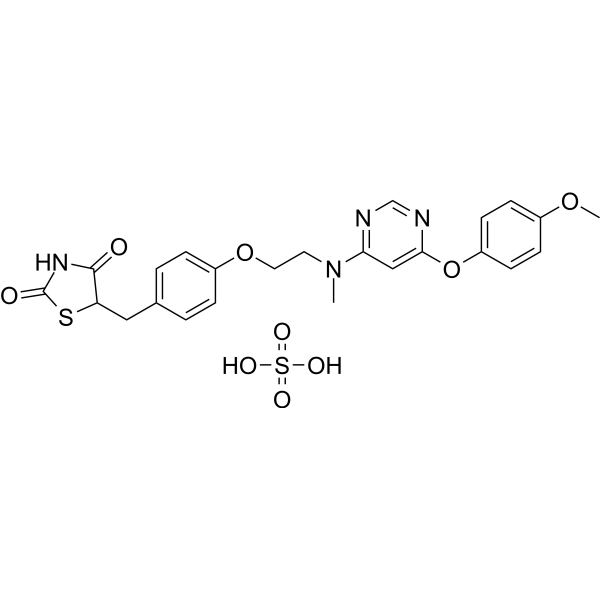
|
| DCC3204 |
M4k2009
Featured
|
M4K2209 is a potent, selective BMP type I receptor ALK2 inhibitor with IC50 of 9 nM, >180-fold selective over ALK5 (IC50=2427 nM). |
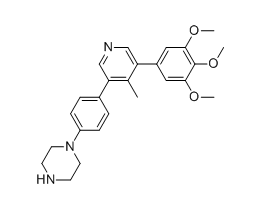
|
| DCC3219 |
Malp-2
Featured
|
Toll-like receptor 2/6 (TLR-2/6) agonist, regulating Lcn2 gene, promoting collateral growth |

|
| DCC3234 |
Maropitant Citrate [359875-09-5]
Featured
|
Neurokinin receptor antagonist with antiemetic activity |

|
| DCC3263 |
MCC950 free acid
Featured
|
Potent and selective inhibitor of NLRP3, reducing interleukin-1β (IL-1β) production in vivo and attenuating the severity of experimental autoimmune encephalomyelitis (EAE) |

|
| DCC3273 |
Mcmmad
Featured
|
Novel mc (maleimidocaproyl) linker plus MMAD (Monomethylauristatin D) to be used for prepare antibodies conjugates via cysteine-capped mechanism |

|
| DCC3294 |
Mebeverine Hydrochloride
Featured
|
Second generation papaverine analog, acting as an anticholinergic agent |

|
| DCC3322 |
Methylaervine
Featured
|
Natural antifungal agent, significantly inducing lipid peroxidation, activating the antioxidant enzymes, and exhibiting effective activity against F. solani (EC50 = 10.56 µM) |

|
| DC3333 |
mG2N001
Featured
|
mG2N001 is a potent negative allosteric modulator (NAM) of metabotropic glutamate receptor 2 (mGluR2) with IC50 of 93 nM. |
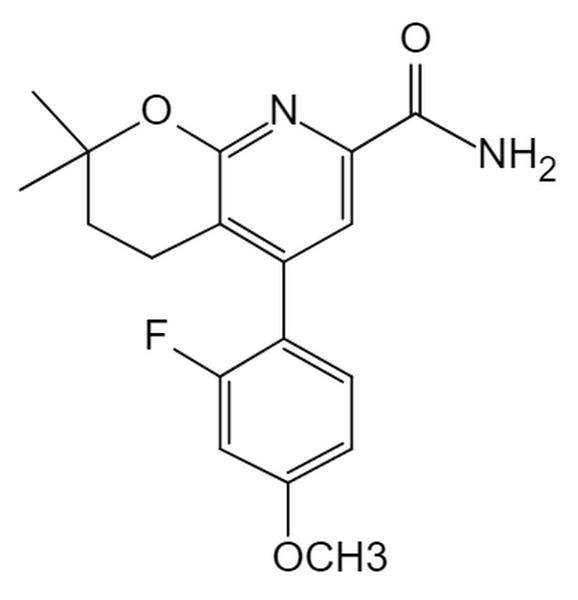
|
| DCC3449 |
Momelotinib Dihydrochloride
Featured
|
Momelotinib (dihydrochloride) is a JAK1/JAK2 inhibitor that also antagonizes ACVR1, leading to downregulation of Hepcidin expression and increased availability of iron for erythropoiesis. Momelotinib (dihydrochloride) can reduce transfusion burden and spleen enlargement caused by myelofibrosis, showing potential value in research and application within the field of myelofibrosis. |

|
| DCC3505 |
Mßl-in-2i
Featured
|
Novel potent broad-spectrum metallo-β-lactamase (MβL) inhibitor, inhibiting the MβLs NDM-1, VIM-2, ImiS, and L1 |

|
| DCC3584 |
NCGC00161856
Featured
|
NCGC00161856 is identified as the first small-molecule ligand and inverse agonist of the thyroid-stimulating hormone receptor (TSHR). It inhibits basal cAMP production in HEK-EM 293 cells that stably express TSHRs, with a half-maximal inhibitory concentration (IC50) of 3.0 µM. This means that NCGC00161856 effectively reduces the constitutive activity of TSHR, which is the receptor's activity in the absence of its natural ligand (thyroid-stimulating hormone, TSH). |

|
| DCC3720 |
Nrf2-activator
Featured
|
Nrf2-Activator is a potent Nrf-2 activator. |

|
| DCC3868 |
Obtusaquinone
Featured
|
Obtusaquinone (OBT) is a potent antineoplastic agent with significant therapeutic potential, particularly in aggressive cancers such as glioblastoma and breast cancer. Its mechanism of action involves the induction of oxidative stress and endoplasmic reticulum (ER) stress, leading to cancer cell death. OBT has demonstrated promising in vivo activity, including the ability to penetrate the blood-brain barrier (BBB) and target brain tumors, making it a particularly valuable candidate for treating central nervous system (CNS) malignancies. |

|
| DCC3870 |
Obtusilactone B
Featured
|
Specific inhibitor of vaccinia-related kinase 1 (VRK1)-mediated phosphorylation of barrier-to-autointegration factor (BAF) |

|
| DCC3875 |
Octreotideacetate
Featured
|
Agonist of sst2, sst3 and sst5 somatostatin receptors |

|
| DCC3952 |
Oxiperomide
Featured
|
Dual dopamine D2 and muscarinic M1 receptor ligand with putative antipsychotic and pro-cognitive potential |

|
| DCC3965 |
P-2281
Featured
|
Novel potent inhibitor of mTOR activity, significantly suppressing macroscopic and histologic abnormalities associated with chemically-induced murine ulcerative colitis. |
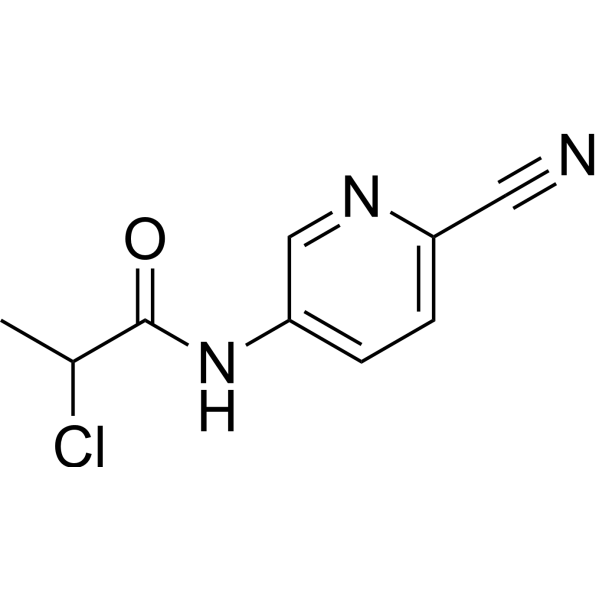
|
| DCC3985 |
Palbociclib Dihydrochloride
Featured
|
Selective inhibitor of the cyclin-dependent kinases CDK4 and CDK6 |
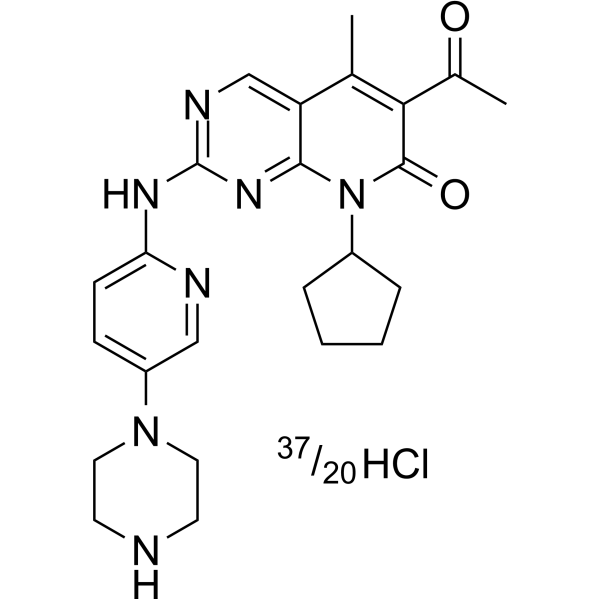
|
| DCC4088 |
Pf-06424439 Mesylate
Featured
|
Potent and selective inhibitor of diacylglycerol acyltransferase 2 (DGAT2) |
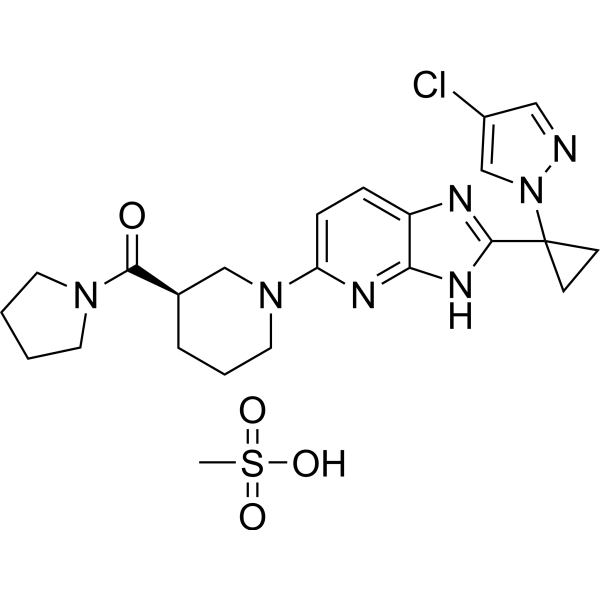
|
| DC30002 |
PF-06835919
Featured
|
PF-06835919, also known as MDK1846, is a potent ketohexokinase (KHK) inhibitor. PF-06835919 is reported in patent US 20170183328 A1, example 4. Increased fructose consumption and its subsequent metabolism have been implicated in hepatic steatosis, dyslipidemia, obesity, and insulin resistance in humans. Since ketohexokinase (KHK) is the principal enzyme responsible for fructose metabolism, identification of a selective KHK inhibitor may help to further elucidate the effect of KHK inhibition on these metabolic disorders. |

|
| DCC4102 |
Pf-543 Hydrochloride
Featured
|
Novel, potent and specific inhibitor of sphingosine kinase-1 (SphK1) |

|
.gif)




























